Frontal Vehicular Crash Energy Management Using Analytical Model in Multiple Conditions
Abstract
1. Introduction
2. Three-Dimensional Analytical Model of Vehicle Front-End Structure
2.1. Three-Dimensional Decomposition of Energy Absorption Space
2.2. Three-Dimensional Decomposition of Crash Pulse
2.3. Construction of Analytical Model
3. Solution of Analytical Model in Multi-Conditions of a Frontal Vehicular Crash
3.1. Solution Method for MPDB Condition
3.2. Solution for Small Overlap Condition
3.3. Verification
3.3.1. Evaluation Indexes
- (1)
- Occupant load criterion (OLC)
- (2)
- Maximum deformation (MD)
- (3)
- Standard deviation (SD)
- (4)
- The penalty of Mcompat (PM)
3.3.2. Verification of MPDB Condition
3.3.3. Verification of Small Overlap Condition
4. Analysis and Discussion
4.1. Impact Analysis of Different Waveform Decomposition Schemes
4.2. Discussion about Stiffness Decomposition of Vehicle
4.3. Comparison with Existing Research
5. Conclusions
- (1)
- comparing the experimental data of the MPDB test and the calculation results of constructed analytical model, the errors of evaluation indexes, i.e., OLC, SD and PM, are all less than 15%, and judgments about the barrier bottoming out are all in accordance;
- (2)
- comparing the simulation data of the SOB test and the calculation results of constructed analytical model, the errors of the maximum intrusion into passenger compartment is −5.88%;
- (3)
- as the W increases, the decomposition scheme becomes more and more uneven, the OLC value gradually decreases, the MD and SD value gradually increases;
- (4)
- OLC is more sensitive to W; MD and SD are more sensitive to the change position of local stiffness and W;
- (5)
- the greater the stiffness of the 25% area, the smaller the deformation of the vehicle front-end structure and the intrusion into the passenger compartment.
Supplementary Materials
Author Contributions
Funding
Institutional Review Board Statement
Informed Consent Statement
Data Availability Statement
Conflicts of Interest
References
- Zhang, H.; Peng, Y.; Hou, L.; Tian, G.; Li, Z. A hybrid multi-objective optimization approach for energy-absorbing structures in train collisions. Inf. Sci. 2019, 481, 491–506. [Google Scholar] [CrossRef]
- Zhang, H.; Peng, Y.; Hou, L.; Wang, D.; Tian, G.; Li, Z. Multistage impact energy distribution for whole vehicles in high-speed train collisions: Modeling and solution methodology. IEEE Trans. Ind. Inform. 2020, 16, 2486–2499. [Google Scholar] [CrossRef]
- Bilston, L.; Brown, J.; Whyte, T. Head excursion in frontal impacts is lower in high back booster seats than in forward facing child seats with internal harnesses designed for children up to 8 years of age. Traffic Inj. Prev. 2022, 23, 244–249. [Google Scholar] [CrossRef] [PubMed]
- Reddy, S. Multi-cornered thin-walled sheet metal members for enhanced crashworthiness and occupant protection. Thin-Walled Struct. 2015, 94, 56–66. [Google Scholar] [CrossRef]
- Nguyen, L.P.T. An optimisation approach to choose thickness of three members to improve IIHS small-overlap structural rating. Int. J. Crashworthiness 2017, 22, 518–526. [Google Scholar] [CrossRef]
- Gidlewski, M.; Prochowski, L.; Jemioł, L.; Żardecki, D. The process of front-to-side collision of motor vehicles in terms of energy balance. Nonlinear Dyn. 2019, 97, 1877–1893. [Google Scholar] [CrossRef]
- Qiu, S. Automobile Crash Safety Engineering; Institute of Technology Press: Beinjing, China, 2016. [Google Scholar]
- Huang, M. Automobile Crash Mechanics; CRC Press: Boca Raton, FL, USA, 2002. [Google Scholar]
- Hu, L.; Zhou, X.; Zhang, X.; Wang, F.; Li, Q.; Wu, W. A review on key challenges in intelligent vehicles: Safety and driver—Oriented features. IET Intell. Transp. Syst. 2021, 15, 1093–1105. [Google Scholar] [CrossRef]
- Othaganont, P.; Assadian, F.; Auger, D.J. Multi-objective optimisation for battery electric vehicle powertrain topologies. Proc. Inst. Mech. Eng. Part D J. Automob. Eng. 2017, 231, 1046–1065. [Google Scholar] [CrossRef]
- Huang, H.; Siddiqui, C.; Abdel-Aty, M. Indexing crash worthiness and crash aggressivity by vehicle type. Accid. Anal. Prev. 2011, 43, 1364–1370. [Google Scholar] [CrossRef]
- Zhang, J. Parameters Design Method for Structure and Occupant Restraint System in Vehicle Crash; Science Press: Beijing, China, 2018. [Google Scholar]
- Zhang, J.; Wang, D.; Wu, L.; Liu, L. Conceptual design of the front-end structure of automobile considering crashworthiness: A three-stage target decomposition method. Int. J. Crashworthiness 2020, 25, 183–191. [Google Scholar] [CrossRef]
- Mizuno, K. Crash Safety of Passenger Vehicles; China Communications Press: Beijing, China, 2016. [Google Scholar]
- Teng, T.L.; Chang, P.H.; Liang, C.C. Application of crash pulse on the car crashworthiness design. Adv. Mech. Eng. 2017, 9, 168781401770009. [Google Scholar] [CrossRef]
- Iraeus, J.; Lindquist, M. Analysis of minimum pulse shape information needed for accurate chest injury prediction in real life frontal crashes. Int. J. Crashworthiness 2021, 26, 684–691. [Google Scholar] [CrossRef]
- Tian, G.; Zhang, H.; Feng, Y.; Jia, H.; Zhang, C.; Jiang, Z.; Li, Z.; Li, P. Operation patterns analysis of automotive components remanufacturing industry development in China. J. Clean. Prod. 2017, 164, 1363–1375. [Google Scholar] [CrossRef]
- Shi, Y.; Wu, J.; Nusholtz, G.S. Optimal Frontal Vehicle Crash Pulses—A Numerical Method for Design. In Proceedings of the 18th Enhanced Safety of Vehicles (ESV) Conference, Nagoya, Japan, 19–22 May 2003; p. 514. Available online: https://www.safetylit.org/citations/index.php?fuseaction=citations.viewdetails&citationIds[]=citjournalarticle_245671_38 (accessed on 17 November 2022).
- Lars, K.; Simon, G.; Konrad, E. Frontal crash pulse assessment with application to occupant safety. ATZ Worldw. 2009, 111, 12–17. [Google Scholar]
- Anselma, P.; Niutta, C.; Mainini, L.; Belingardi, G. Multidisciplinary design optimization for hybrid electric vehicles: Component sizing and multi-fidelity frontal crashworthiness. Struct. Multidiscip. Optim. 2020, 62, 2149–2166. [Google Scholar] [CrossRef]
- Qi, C.; Ma, Z.; Kikuchi, N.; Raju, B. Blast protection design of a military automobile system using a magic cube approach. SAE SP 2008, 2195, 21. [Google Scholar]
- Malen, D. Fundamentals of Automobile Body Structure Design; SAE International: Warrendale, PA, USA, 2011. [Google Scholar]
- Narukawa, T.; Nishimura, H.; Ito, Y.; Motozawa, Y. Studies on Occupant Restraint Method in Car Crash Using Reduced-Order Dynamic Model Considering Thoracic Deflection. Nihon Kikai Gakkai Ronbunshu C Hen/Trans. Jpn. Soc. Mech. Eng. Part C 2013, 79, 1396–1405. [Google Scholar] [CrossRef]
- Wang, D.; Zhang, J.; Ma, Y.; Jin, Y. Analytical modeling and collaborative optimization of the dynamic responses for barrier-vehicle-occupant system considering crashworthiness and compatibility. Struct. Multidiscip. Optim. 2021, 64, 349–367. [Google Scholar] [CrossRef]
- Zhang, J.; Chen, G.; Liu, L.; Li, H.; Tang, H. Design and target decomposition of impact pulse of car frontal crashworthiness. J. Jilin Univ. Eng. Technol. Ed. 2012, 42, 823–827. [Google Scholar]
- Huang, M.; Laya, J.; Loo, M. A study on ride-down efficiency and occupant responses in high speed crash tests. SAE Tech. Pap. 1995. [Google Scholar] [CrossRef]
- Mizuno, K.; Itakura, T.; Hirabayashi, S.; Tanaka, E.; Ito, D. Optimization of vehicle deceleration to reduce occupant injury risks in frontal impact. Traffic Inj. Prev. 2014, 15, 48–55. [Google Scholar] [CrossRef] [PubMed]
- Dima, D.; Covaciu, D. Vehicles Frontal Impact Analysis Using Computer Simulation and Crash Test. Int. J. Automot. Technol. 2019, 20, 655–661. [Google Scholar] [CrossRef]
- Zou, T.; Shang, S.; Simms, C. Potential benefits of controlled vehicle braking to reduce pedestrian ground contact injuries. Accid. Anal. Prev. 2019, 129, 94–107. [Google Scholar] [CrossRef]
- Yan, H.; Zhong, L.; Yu, J.; Jiang, W. Research on 2020 E-NCAP MPDB Test. Automob. Appl. Technol. 2019, 21, 6. [Google Scholar]
- Watanabe, T.; Kuroda, I.; Nakajima, T. Relationship between frontal car-to-car test result and vehicle crash compatibility evaluation in mobile progressive deformable barrier test. Traffic Inj. Prev. 2019, 20, S78–S83. [Google Scholar] [CrossRef] [PubMed]
- Nguyen, P.; Lee, J.; Yim, H. Analysis of vehicle structural performance during small-overlap frontal impact. Int. J. Automot. Technol. 2015, 16, 799–805. [Google Scholar] [CrossRef]
- Hu, L.; Tian, Q.; Zou, C.; Huang, J.; Ye, Y.; Wu, X. A study on energy distribution strategy of electric vehicle hybrid energy storage system considering driving style based on real urban driving data. Renew. Sustain. Energy Rev. 2022, 162, 112416. [Google Scholar] [CrossRef]
- Wang, F.; Yin, J.; Hu, L.; Wang, M.; Liu, M.; Miller, K.; Wittek, A. Should anthropometric differences between the commonly used pedestrian computational biomechanics models and Chinese population be taken into account when predicting pedestrian head kinematics and injury in vehicle collisions in China? Accid. Anal. Prev. 2022, 173, 106718. [Google Scholar] [CrossRef]
- Farid, A.; Ksaibati, K. Modeling Two-Lane Highway Passing-Related Crashes Using Mixed Ordinal Probit Regression. J. Transp. Eng. Part A Syst. 2020, 9, 146. [Google Scholar] [CrossRef]
- Tian, G.; Yuan, G.; Aleksandrov, A.; Zhang, T.; Li, Z.; Fathollahi-Fard, A.M.; Ivanov, M. Recycling of spent Lithium-ion Batteries: A comprehensive review for identification of main challenges and future research trends. Sustain. Energy Technol. Assess. 2022, 53, 102447. [Google Scholar] [CrossRef]
- Wang, K.; Xie, G.; Xiang, J.; Li, T.; Peng, Y.; Wang, J.; Zhang, H. Materials selection of 3D printed polyamide-based composites at different strain rates: A case study of automobile front bumpers. J. Manuf. Process. 2022, 84, 1449–1462. [Google Scholar] [CrossRef]
- Hu, S.; Ma, Z.D.; Qi, C. Magic Cube approach application on crashworthiness design of front rail in front angle impact. In Proceedings of the 2009 International Conference on Mechatronics and Automation, Changchun, China, 9–12 August 2009; pp. 3521–3526. [Google Scholar]
- Zhou, Y.; Lan, F.; Wei, X.A. A Study on the Matching Law of High Strength Steel Sheets for Car-body Front-end Structures Based on Frontal Impact Requirements. Automot. Eng. 2009, 31, 990–994. [Google Scholar]
- Qiu, S.; Li, H.; Zhang, J. Optimized ride-down rate control in frontal impact and its application in the energy management of occupant restraint system. SAE Tech. Pap. 2013. [Google Scholar] [CrossRef]

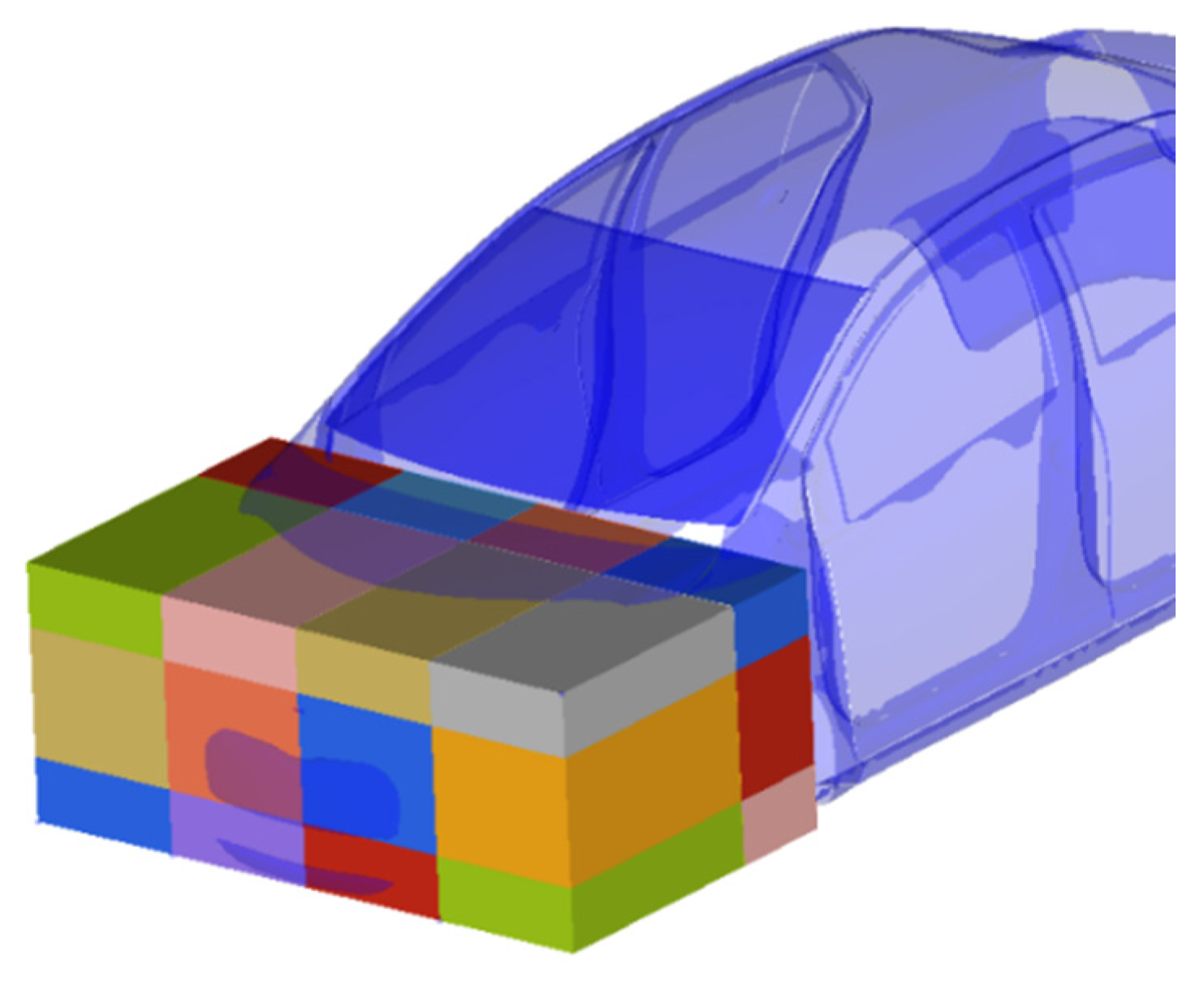
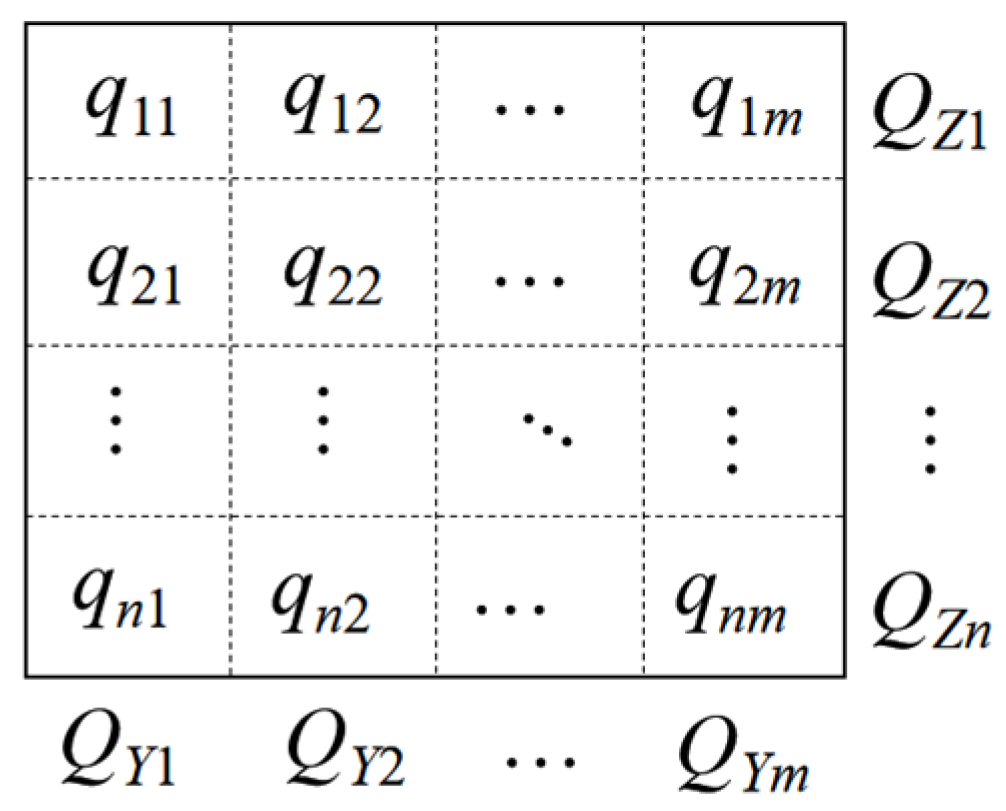
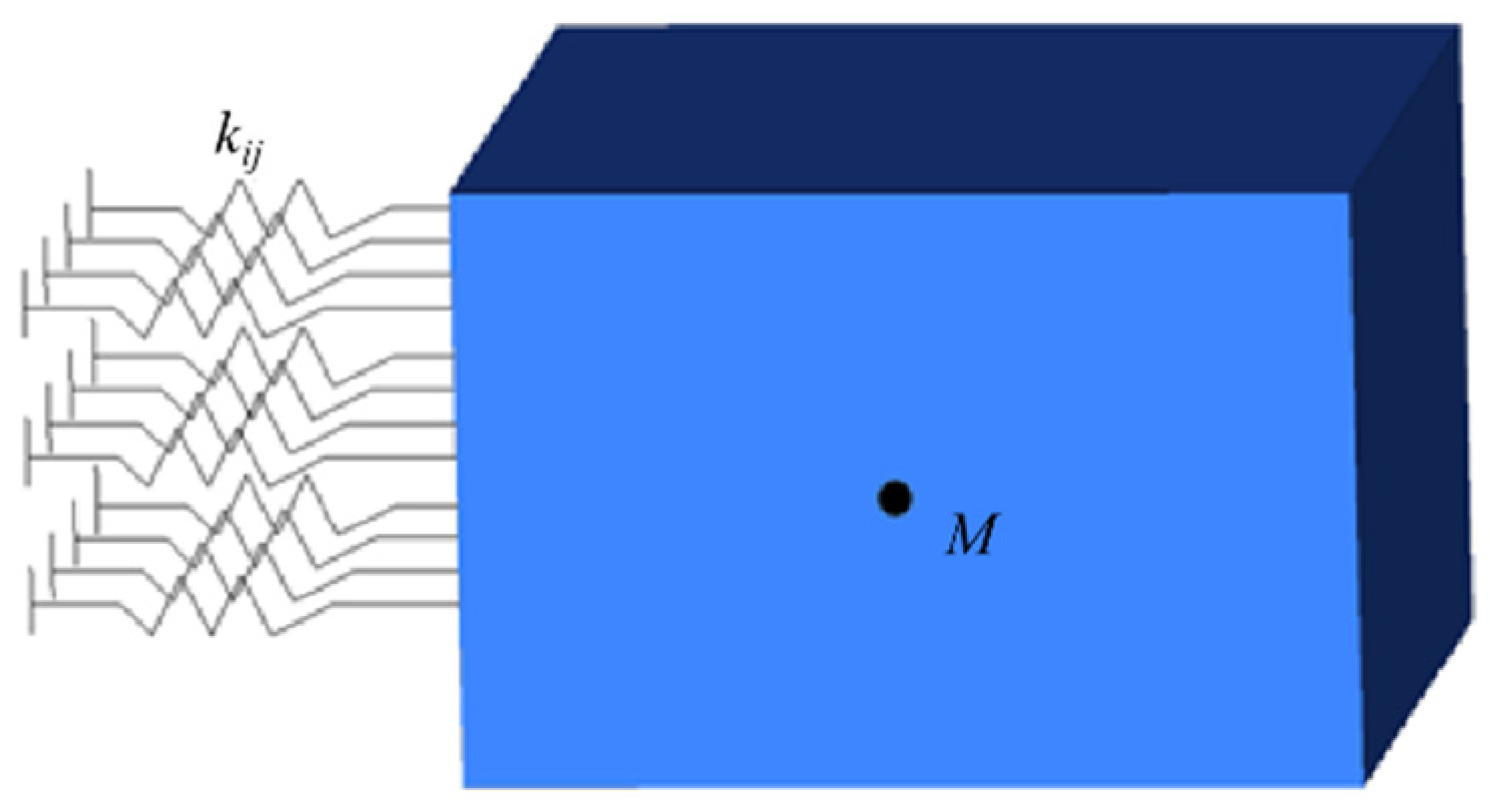
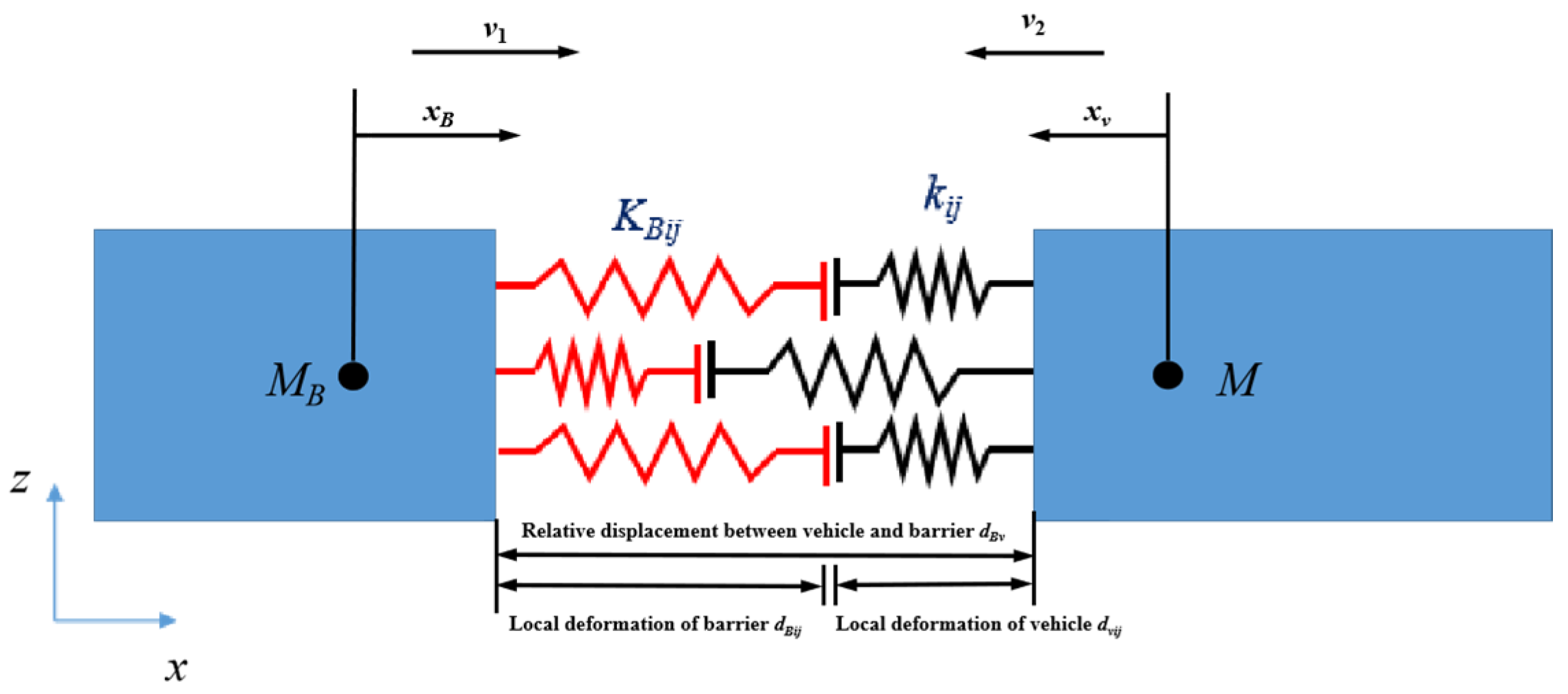
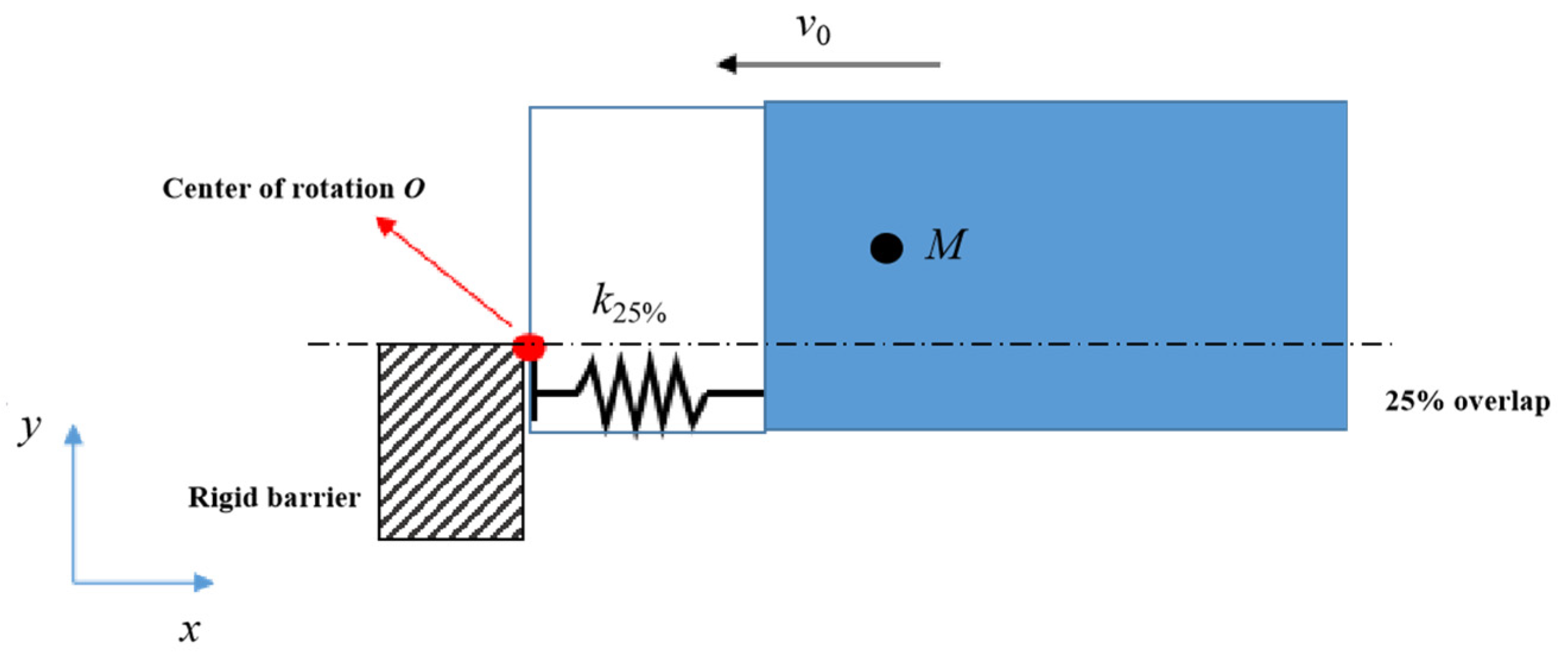
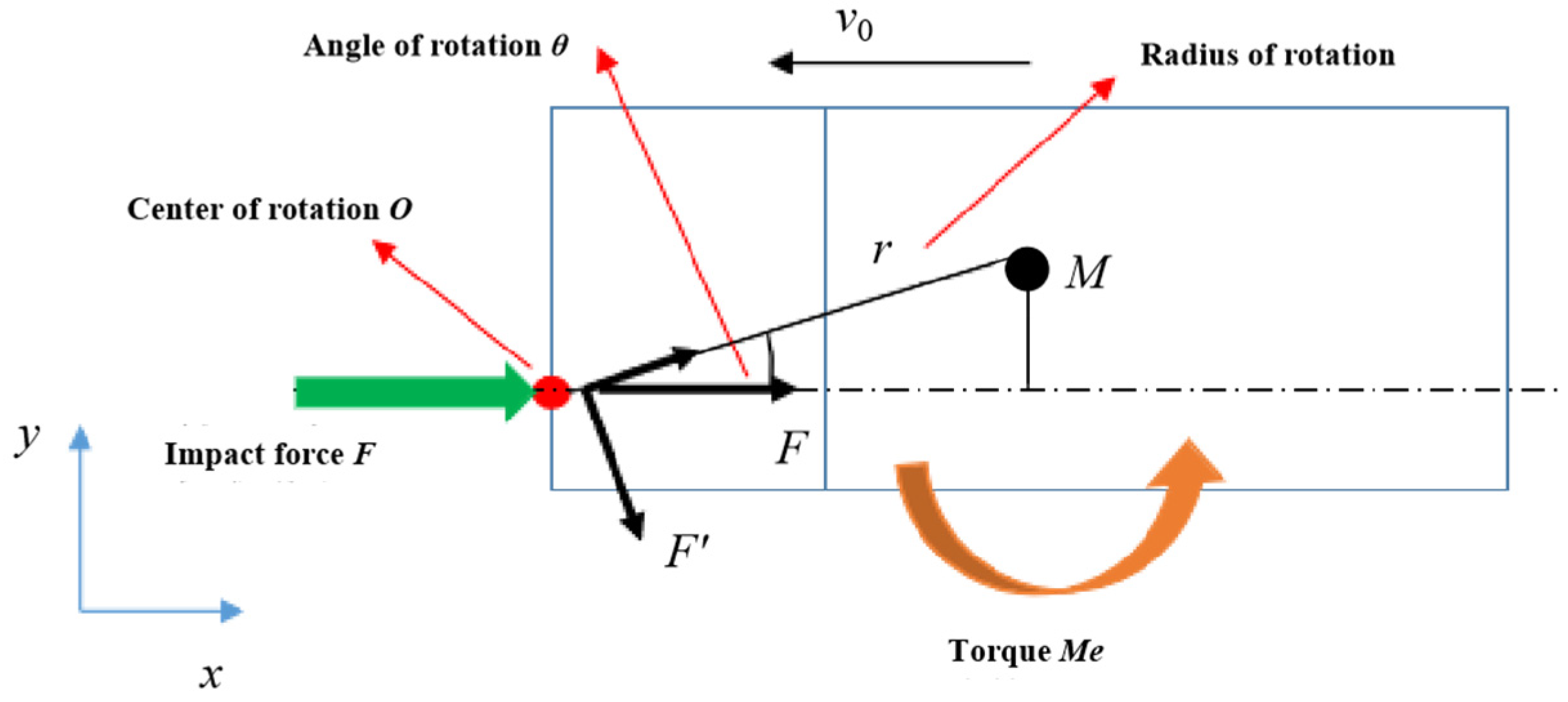
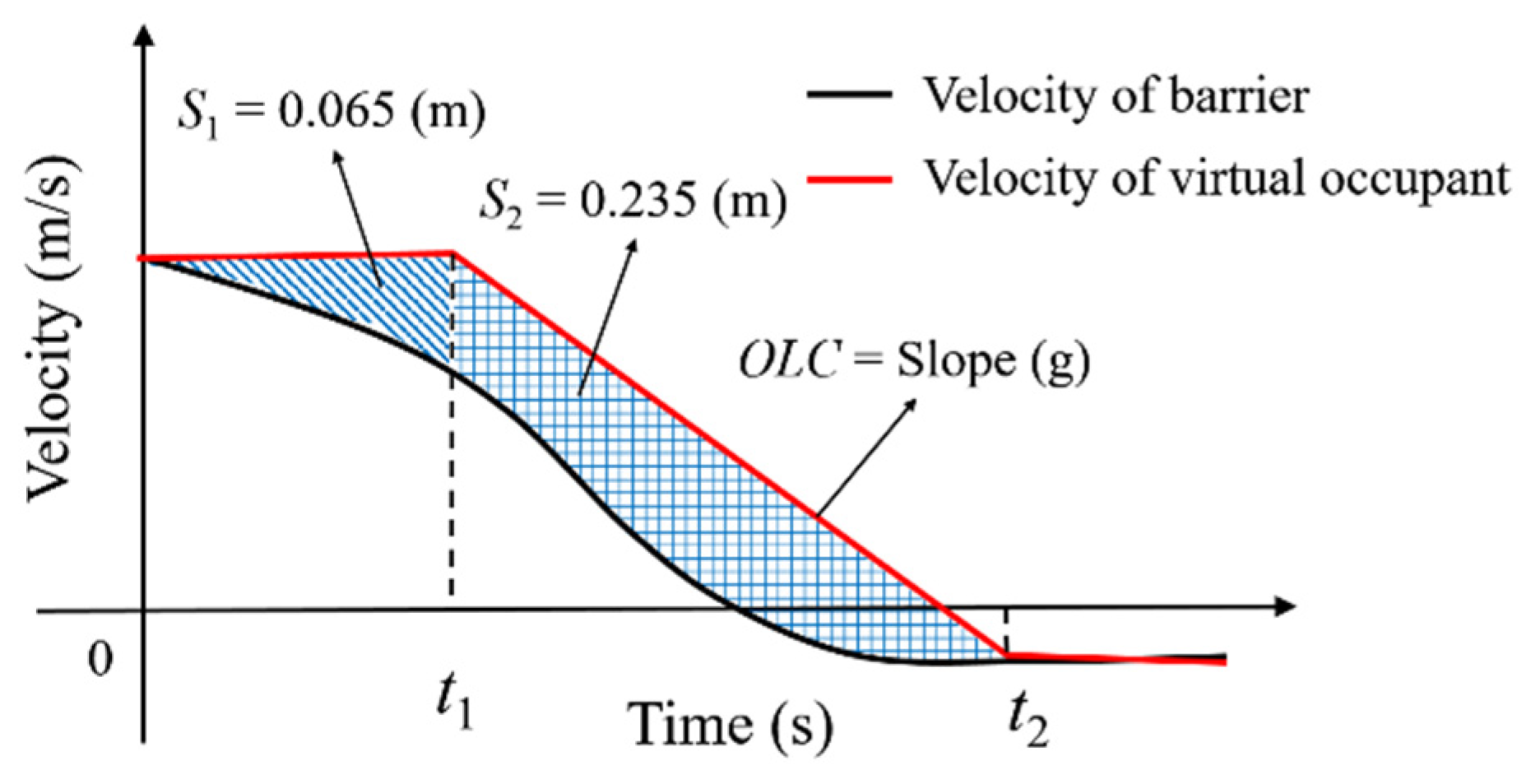
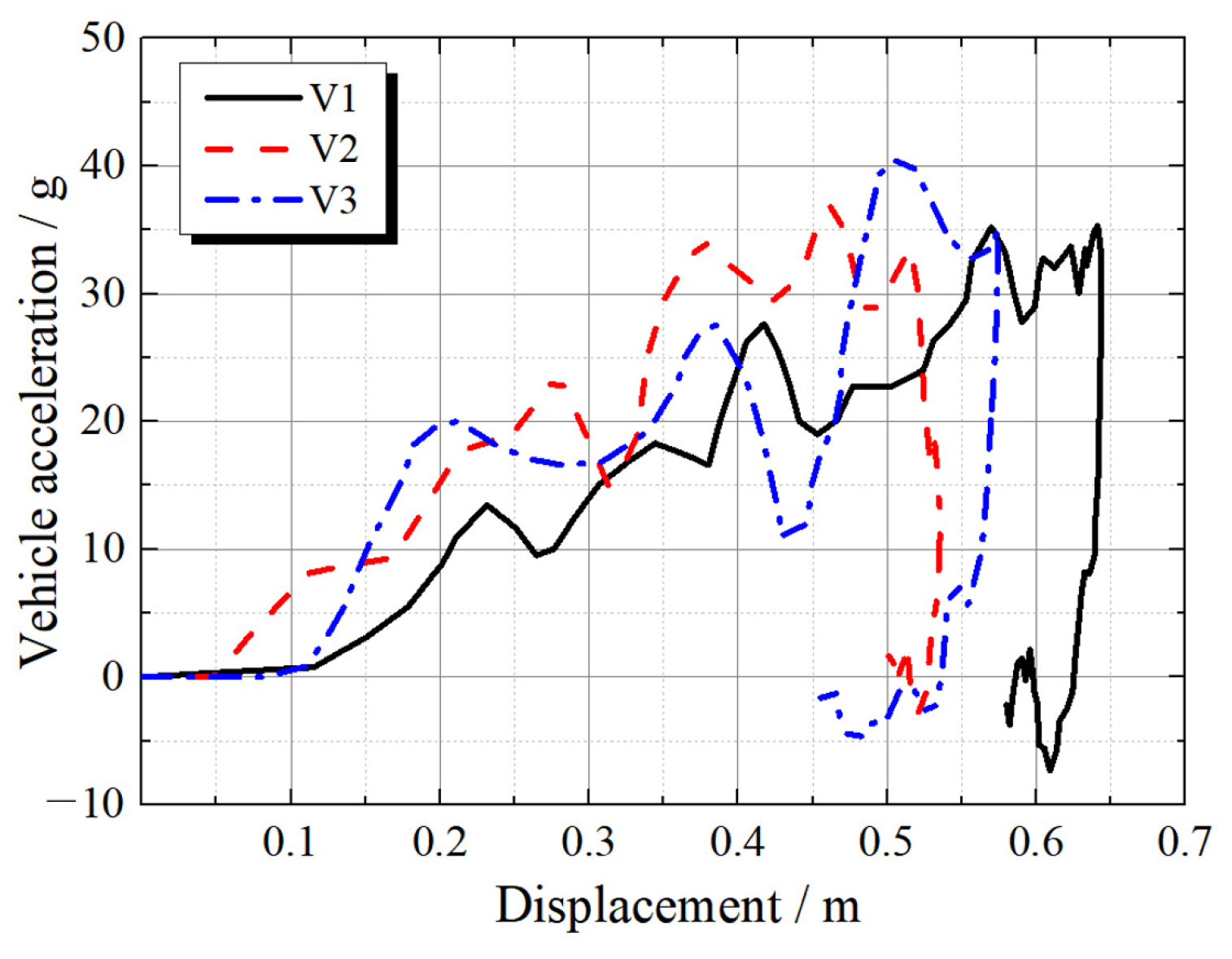
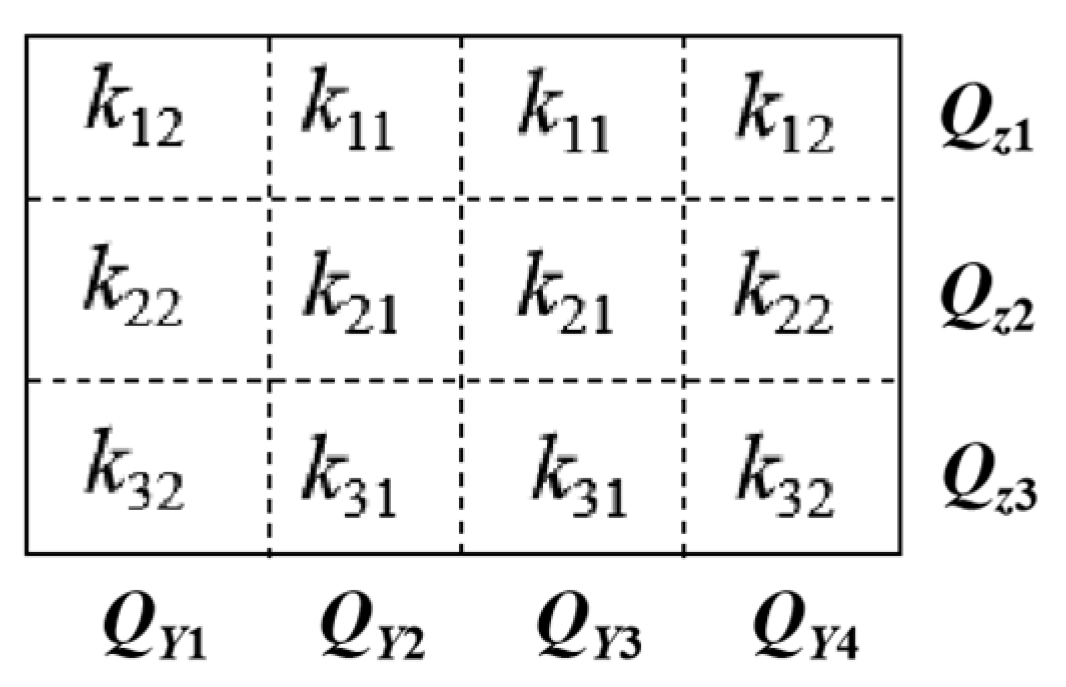



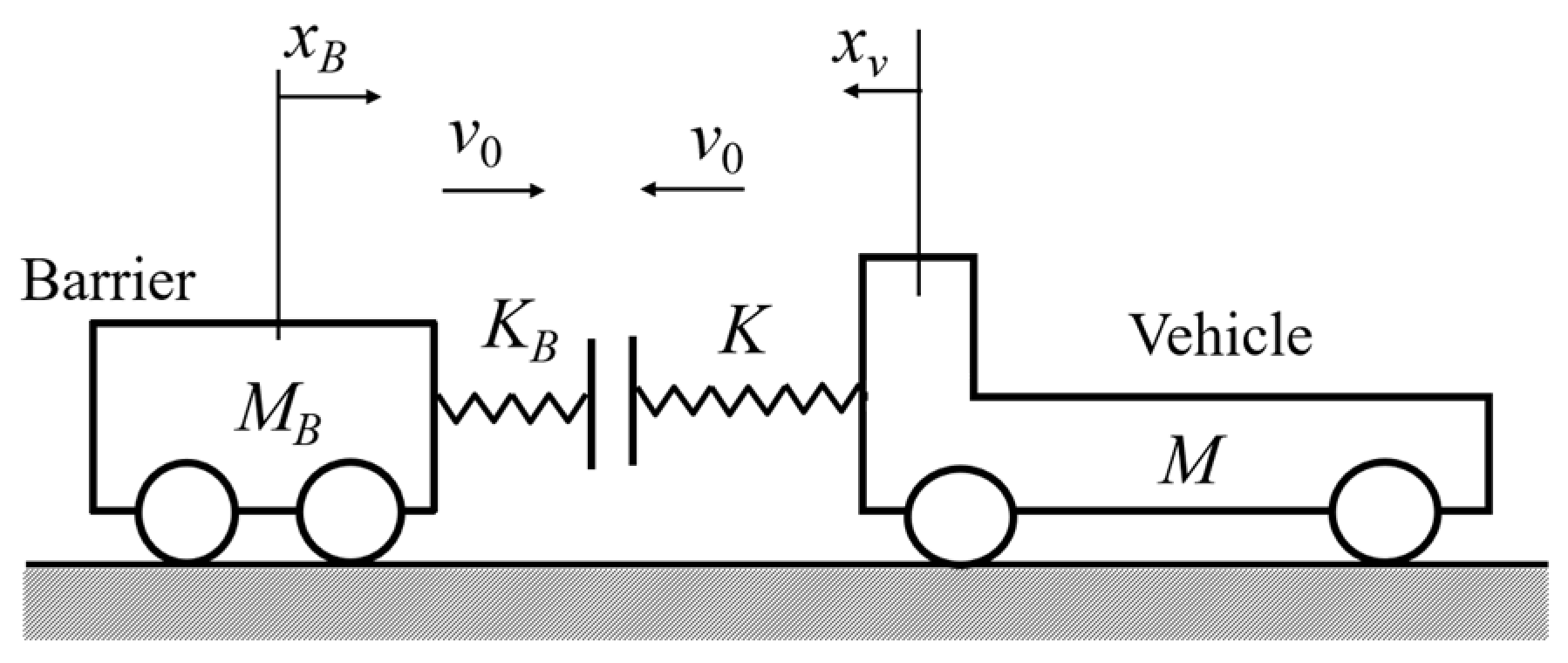
| Vehicles | Results | Evaluation Indexes | |||
|---|---|---|---|---|---|
| OLC (g) | MD (m) | SD (mm) | PM | ||
| V1 | Existing data | 35.9 | Bottoming, MD > 0.63 | 56 | 3.74 |
| Calculation | 31.30 | 0.71 | 63.34 | 3.38 | |
| Error | −12.26% | Accord | 13.1% | −9.6% | |
| V2 | Existing data | 27.8 | NO, MD < 0.63 | 93.5 | 1.57 |
| Calculation | 27.33 | 0.62 | 98.3 | 1.58 | |
| Error | −1.7% | Accord | 5.1% | 0.5% | |
| V3 | Existing data | 26.3 | NO, MD < 0.63 | 96.4 | 1.26 |
| Calculation | 23.75 | 0.57 | 107.05 | 1.14 | |
| Error | −9.7% | Accord | 11.04% | −9.5% | |
| No. | Alternative A | Alternative B | Alternative C | ||||||
|---|---|---|---|---|---|---|---|---|---|
| One of qij | Other qij | W | Two of qij | Other qij | W | Three of qij | Other qij | W | |
| 1 | 0 | 0.10 | 0.50 | 0 | 0.125 | 1.00 | 0 | 0.1667 | 1.5 |
| 2 | 0.05 | 0.09 | 0.20 | 0.05 | 0.10 | 0.40 | 0.05 | 0.1177 | 0.6 |
| 3 | 1/12 | 0.0833 | 0 | 1/12 | 0.0833 | 0.00 | 1/12 | 0.0833 | 0 |
| 4 | 0.1 | 0.08 | 0.10 | 0.1 | 0.075 | 0.20 | 0.1 | 0.0667 | 0.3 |
| 5 | 0.15 | 0.07 | 0.40 | 0.15 | 0.05 | 0.80 | 0.15 | 0.0167 | 1.2 |
| 6 | 0.2 | 0.06 | 0.70 | 0.2 | 0.025 | 1.40 | |||
| 7 | 0.25 | 0.05 | 1 | 0.25 | 0 | 2.00 | |||
| 8 | 0.3 | 0.04 | 1.30 | ||||||
| 9 | 0.35 | 0.03 | 1.60 | ||||||
| 10 | 0.4 | 0.02 | 1.90 | ||||||
| 11 | 0.45 | 0.01 | 2.20 | ||||||
| 12 | 0.5 | 0 | 2.50 | ||||||
| Large Vehicle | Medium Vehicle | Small Vehicle | |
|---|---|---|---|
| avmax (g) | 30.77 | 36.14 | 43.34 |
| OLC (g) | 33.15 | 29.17 | 25.84 |
| MD (m) | 0.63 | 0.55 | 0.48 |
Publisher’s Note: MDPI stays neutral with regard to jurisdictional claims in published maps and institutional affiliations. |
© 2022 by the authors. Licensee MDPI, Basel, Switzerland. This article is an open access article distributed under the terms and conditions of the Creative Commons Attribution (CC BY) license (https://creativecommons.org/licenses/by/4.0/).
Share and Cite
Wang, D.; Zhang, J.; Wang, S.; Hu, L. Frontal Vehicular Crash Energy Management Using Analytical Model in Multiple Conditions. Sustainability 2022, 14, 16913. https://doi.org/10.3390/su142416913
Wang D, Zhang J, Wang S, Hu L. Frontal Vehicular Crash Energy Management Using Analytical Model in Multiple Conditions. Sustainability. 2022; 14(24):16913. https://doi.org/10.3390/su142416913
Chicago/Turabian StyleWang, Danqi, Junyuan Zhang, Shihang Wang, and Lin Hu. 2022. "Frontal Vehicular Crash Energy Management Using Analytical Model in Multiple Conditions" Sustainability 14, no. 24: 16913. https://doi.org/10.3390/su142416913
APA StyleWang, D., Zhang, J., Wang, S., & Hu, L. (2022). Frontal Vehicular Crash Energy Management Using Analytical Model in Multiple Conditions. Sustainability, 14(24), 16913. https://doi.org/10.3390/su142416913








